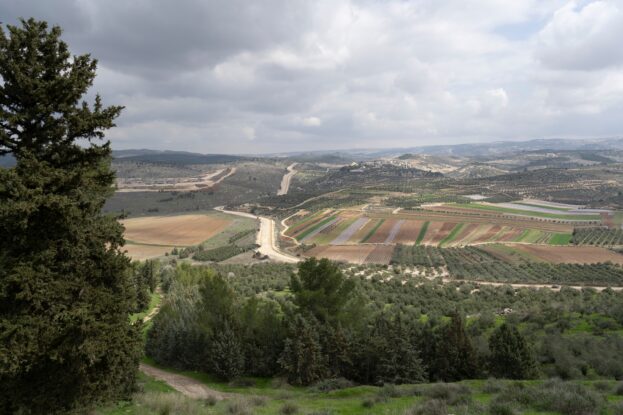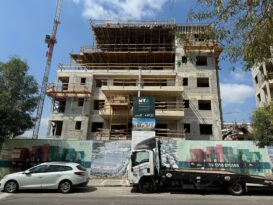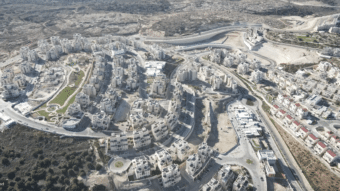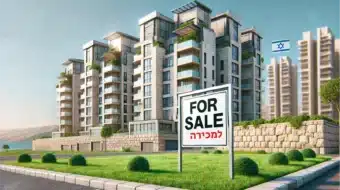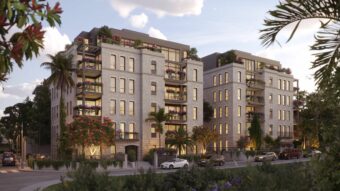The Israeli government have announced the approval of 22 new West Bank settlements, marking the largest expansion of its kind in years. Quietly approved two weeks earlier in a secret Security Cabinet meeting, the decision was led by Defense Minister Israel Katz and Finance Minister Bezalel Smotrich. The plan includes the formal legalization of unauthorized outposts and the re-establishment of previously evacuated communities, with the stated aim of strengthening Israel’s hold on Judea and Samaria and blocking the possibility of a future Palestinian state. Supporters view it as a necessary strategic move; critics warn it could deepen tensions and isolate Israel on the world stage.
In a decision that is already sending political ripples across Israel and abroad, the Israeli government has authorized the establishment of 22 new settlements in Judea and Samaria (the West Bank). The move, which was approved two weeks earlier in a secret meeting of the Security Cabinet, was publicly announced today, in a joint statement by Defense Minister Israel Katz and Finance Minister Bezalel Smotrich, who led the initiative. It marks the largest single expansion of settlements in years and includes a mix of entirely new communities and the formal legalization of previously unauthorized outposts.
This sweeping decision, championed by Katz and Smotrich, represents a significant step in the government’s strategy to entrench Israeli presence across disputed territory. At the same time, it also raises profound questions—about timing, legality, security, diplomacy, and long-term consequences.
The Decision: What Was Approved?
The 22 new West Bank settlements span a wide geographic range—including northern Samaria, the Jordan Valley, the eastern Dead Sea corridor, and the southern Hebron Hills—reinforcing Israel’s presence across key strategic regions. Among them are Adi-Ad, Ahiya, Nofei Prat, Atarot Adar, Inbar, Beit Horon North, Kedem Arava, Machane Gadi, Ir Hatmarim, Gevaonit, Tevetz, Mitzpe Ziv, El Naveh, Havat Yair, Ma’oz Tzvi, Ma’alot Halhul, Afeka, Yonadav, Rechavam, and Har Eival—each representing either an unauthorized outpost now being formalized or a newly designated community.
Notably, the list includes the former settlements of Homesh and Sa-Nur, which were dismantled during the 2005 disengagement from the Gaza Strip and have remained flashpoints in the national debate over territorial withdrawal. These communities, scattered from the northern hills of Samaria to the Jordan Valley and down to the Hebron Hills and Dead Sea region, are now slated for official recognition and eventual integration into Israel’s municipal planning system.
Though formal details are limited, Hebrew media reports indicate that this is not merely a symbolic gesture. These settlements are expected to receive municipal status, funding for roads and utilities, and long-term planning support from the Civil Administration.
The Strategic Logic
While this dramatic settlement expansion has stirred immediate political debate, proponents argue that it reflects a well-defined strategic doctrine—one that combines ideological commitment with pragmatic considerations.
Minister Katz explained that the move strengthens Israel’s territorial depth and ensures a firm Jewish presence in critical locations.
“This decision anchors our historical right in the Land of Israel and serves as a decisive response to terrorism.”
MK Israel Katz
Finance Minister Smotrich, who also holds a role in the Defense Ministry overseeing West Bank civil matters, described it as a strategic move to prevent the establishment of a Palestinian state “that would endanger Israel.” For Smotrich, a leading voice of the Religious Zionist movement, the expansion is both a political milestone and a step toward a broader vision of Israeli sovereignty across all of Judea and Samaria.
A key part of the government’s narrative is that these outposts fill in gaps between established settlements, reinforcing territorial contiguity and protecting key transportation routes, particularly Route 443 and Highway 60, which are vital links between Jerusalem, the coastal plain, and remote Jewish communities.
Timing is No Coincidence
Why now? First, the move comes at a moment of heightened national tension. Israel remains engaged in a prolonged war against Hamas in Gaza, its northern border is heating up, and security incidents in the West Bank continue to rise. The government appears to be signaling strength and resolve, especially to right-wing constituents who view the conflict as further justification for Israeli control over the entire Land of Israel.
Second, the move reflects internal political dynamics. The current coalition relies heavily on settler-aligned parties, including Smotrich’s Religious Zionism and Ben-Gvir’s Otzma Yehudit. Delivering tangible wins for the settlement movement may be critical to maintaining political stability.
Finally, although the approvals come in anticipation of international pushback, they may also reflect Israel’s growing confidence under the renewed Trump administration. President Trump’s historically supportive stance on settlement activity—including his recent lifting of sanctions on West Bank settlers—has likely created a political climate in which the Israeli government feels emboldened to act decisively, viewing Washington as a strategic ally willing to back, or at least tolerate, further expansion in Judea and Samaria.
Legal and Political Controversy
The approval of these settlements will likely intensify legal challenges and international condemnation. Under Israeli law, many of these outposts were previously considered illegal due to lack of master plans or location on private Palestinian land. Some were built without permits, others on land still under legal dispute. The new government decision bypasses many of those hurdles through a national-level authorization, effectively circumventing years of bureaucratic and judicial processes.
Under international law, all Israeli settlements in the West Bank are considered illegal by most of the global community, including the European Union and United Nations. The United States, while often more restrained in its language, has long opposed “unilateral actions” that hinder a two-state solution.
Religious Zionism MK Orit Strock, a vocal supporter of settlement expansion, framed the move in ideological and historical terms. In a public statement, she said:
“We made a promise, and we kept it. New settlements are being established in Judea and Samaria, closing a gap of decades in the settlement of the land and providing a Zionist response to vast spaces that have been neglected and abandoned….Through our actions, we express our right to the land and our duty towards it. We continue to correct the sin of disengagement.”
MK Orit Strock
Palestinian leaders reacted angrily to the announcement. A spokesman for the Palestinian Authority called it a “deliberate act of aggression,” and claimed it “destroys the possibility of peace.” They also appealed to the international community for immediate intervention.
Even within Israel, the move has drawn fire from opposition figures and civil rights organizations. The left-wing group Peace Now condemned the decision as “an act of cynical political manipulation that will cost lives and isolate Israel diplomatically.”
Real Estate and Housing Impact
While the political debate will dominate headlines, the ripple effects of this decision will likely reach the Israeli housing market—especially for those looking for affordable housing or long-term investment in emerging communities.
1. A New Frontier for Development?
With much of Israel’s central corridor saturated and prohibitively expensive, expanding settlement construction has long been viewed as a pressure valve. The legalization of outposts could allow developers to secure permits, and attract buyers priced out of Tel Aviv, Jerusalem, and the Sharon region. For young religious families, particularly those aligned ideologically with the settler movement, these new communities represent affordable, meaningful opportunities to build homes and lives.
2. Infrastructure Expansion
One consequence of the new approvals will be the allocation of public funds to build or upgrade roads, water systems, electricity grids, and public transportation links to these areas. In some cases, residents may finally receive the basic municipal services they’ve lacked for years—garbage collection, schools, health clinics, etc. This could improve quality of life for thousands of current residents and make the areas more attractive to new buyers.
3. Increased Risk for Investors
That said, real estate in these areas also carries legal, political, and reputational risk.
- Some plots may still be contested or subject to future demolition if court challenges succeed.
- Foreign buyers may find it difficult to secure mortgages or insurance for homes in unrecognized or disputed communities.
- The volatile security situation in parts of the West Bank could discourage investment or limit resale potential.
Buyers should consult experienced legal counsel before engaging in real estate transactions in these newly approved areas.
Looking Ahead
This announcement is likely the beginning of a broader movement. Smotrich and his allies are pushing not just for outpost legalization, but for the full application of Israeli civil law in Area C of the West Bank—a de facto annexation that would mark a radical shift in policy.
Whether the government pursues that path remains to be seen. But the decision to approve 22 new West Bank settlements, quietly and without parliamentary oversight, suggests that the political will and operational tools are in place to do much more.
The Buyitinisrael Editorial team is made up of industry experts, journalists, researchers, editors, and translators working together to deliver reliable, up-to-date information about the Israeli property market — all in English. With a strong focus on transparency and accessibility, our goal is to empower English-speaking buyers by helping them understand the market and navigate the real estate process with clarity and confidence.
For inquiries, email info@buyitinisrael.com.
